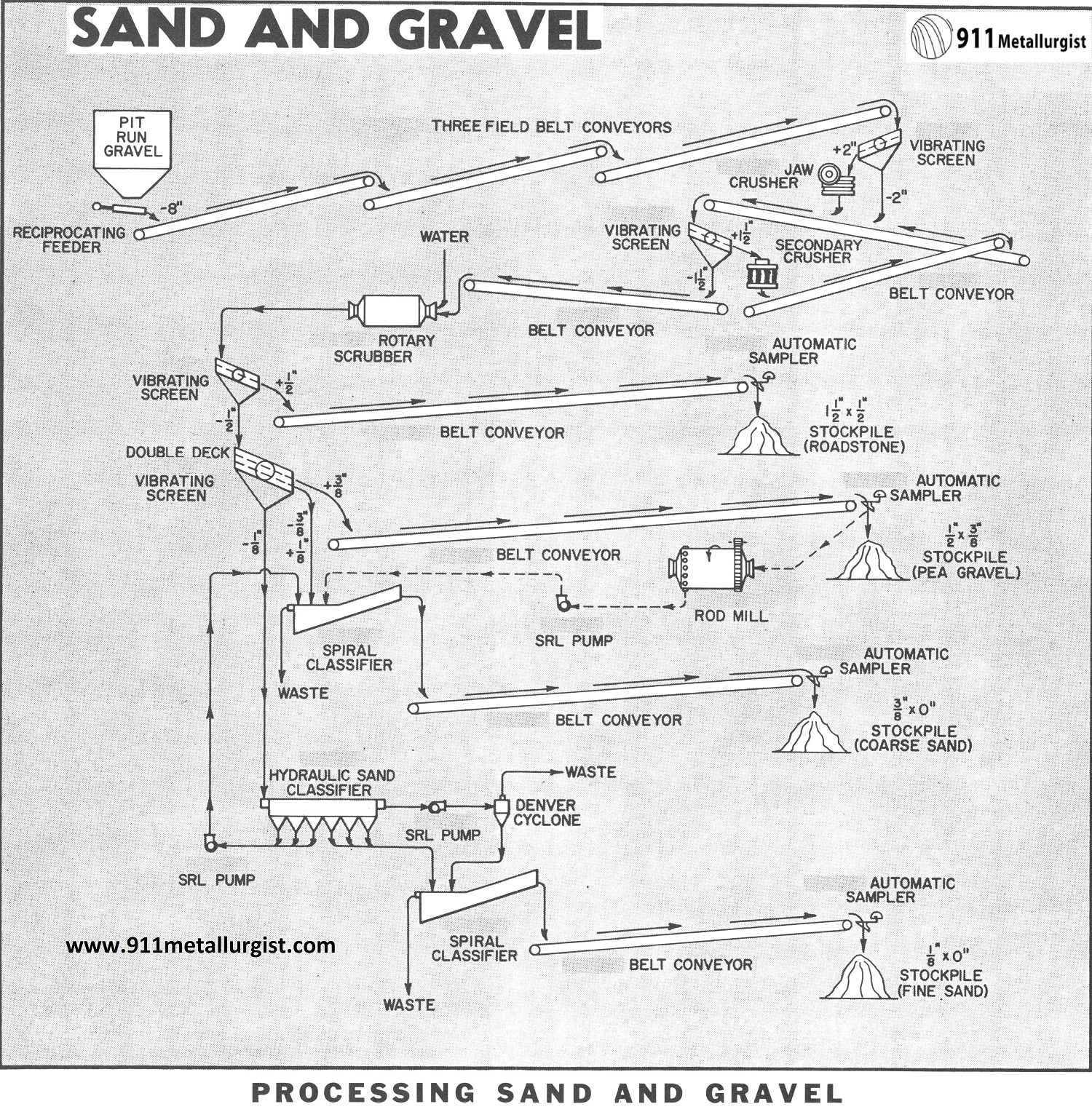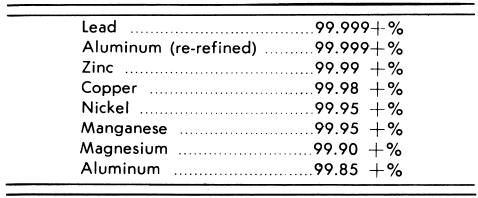Chemical Smelting

Some of us who have been acquainted with the present methods of production of metals, and who have had an opportunity to witness the impact of some of the newer chemical techniques on metallurgy, have become convinced that it is possible to consider seriously the treatment of sulfide minerals by strictly chemical methods as distinct […]
Silver & Cobalt Processing by Gravity and Flotation

The treatment of complex silver cobalt ores occurring with antimony and arsenic require special metallurgical processing to produce concentrates most advantageous for smelting. Gravity concentration is used to initially recover a high percentage of the native silver and cobalt. The concentrate is marketed and payment received for these constituents. Flotation treatment of the gravity tailing […]
How to Make Gravel and Sand

The processing of extensive pit run gravel in many instances employs a permanent or semi-permanent plant installation with a flexible system for movement of feed. The plant must be designed to produce a variety of product sizes and be capable of changing and blending products to meet varying customer specifications or to compensate for variations […]
Electrolytic Refining

The list of pure non-ferrous metals so widely used in modern industry includes many that are produced by electrolytic means, such as copper, zinc, nickel, aluminum, magnesium, lead, sodium, cadmium, calcium and many others. In the case of some metals, ordinary fire or chemical methods of production are important, but in others, 100 per cent of […]
Phosphate Flotation

The phosphate-bearing formations in the West constitute relatively thick beds of phosphatic sandstones and shales that can be mined on a large scale employing open pit methods. The mineralogical characteristics vary considerably and require various treatment conditions for specific areas. For Phosphate, flotation is, in general, very important to upgrading the phosphate rock and is employed in […]
Leaching Plant Design

Leaching plants, faced with increased tonnage, coarse (up to —3/16″ solids) feed, longer retention time, erosion, corrosion and the high cost of space, must be compact, simple and highly efficient. The engineer faced with the obvious economy of using a few large agitators compared to many smaller units must also evaluate the design factors which will prevent the settling-out of solids, provide […]
Beneficiation Process of Kaolinite

Kaolin is an important industrial mineral having numerous uses and requiring various market specifications. High brightness kaolin clays represent a continuing challenge to the producer. An advancement in this field of Kaolinite Clay Beneficiation has been a patented process developed by Minerals and Chemicals Philipp Corporation and termed Ultra Flotation. Contaminants that are 1 micron […]
Beneficiation of Iron Ore

Beneficiation of Iron Ore and the treatment of magnetic iron taconites, stage grinding and wet magnetic separation is standard practice. This also applies to iron ores of the non-magnetic type which after a reducing roast are amenable to magnetic separation. All such plants are large tonnage operations treating up to 50,000 tons per day and […]
Heavy Media Separation Process

The Sink and Float separation process is part of what is also known as a Heavy Media Separation Process (HMS) and are commercial adaptations of the common laboratory procedure used for separating a mixture of two products having differentials in specific gravity by immersing the sample in a heavy liquid having a gravity intermediate to those of […]
Different Types of Flotation Cells

Flotation is both a science and an art. It brings together many complex variables. Such basic factors as knowledge of mineral structure, chemical reagents, pH of mill water, pulp density, temperature, technical skills of the operator, the dependability of the flotation machine, as well as a host of other factors which affect the flotation of […]
